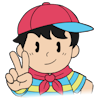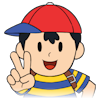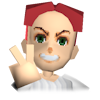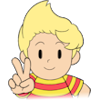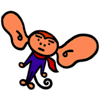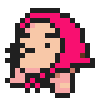The Legend of Zelda: Ocarina of Time Interview from Hobonichi
by: Echoes on 3/19/2022
The Legend of Zelda: Ocarina of Time news, direct from the production area! The Zelda team chosen by Shigeru Miyamoto created Zelda 64 with surprising stubbornness! One part of that stubbornness was to do a stubborn interview. We’ll pass on a small part of that interview from the top of Hobonichi’s nearby tree.
Miyamoto Talks Zelda
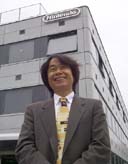
Shigeru Miyamoto begins to speak.
Hobonichi: Please explain why you said “I want to make a game, not a movie”.
Miyamoto: Well, if I didn’t say “This isn’t a movie”, I would be misunderstood people who are trying to make one. I wanted to avoid that. I was first employed at Nintendo when it was a card shop. At that time I found it interesting to make things that no one understood, that didn’t exist before.
When making a game, I didn’t really think it would be convenient to produce it like a movie. I knew that what we made needed to be interesting and convenient for the users. The organization of games and movies is similar, but the presentation is distinctly different, you see. Koichi Sugiyama once said “Game music is just a parody of movie music”, but I strongly disagree. When a game is presented, it’s not meant to be treated as only a movie parody. As game developers our intention is to create something that is movie-like but not a movie, game-like but not a game, an arena that no one has yet experienced.
Because games require a powerful presentation, I suppose that in some cases the benefits of a movie-like production would be reaped. However, everyone involved with this project was thinking “let’s make a new media capable of competing with movies”.
Games are becoming closer and closer to movies, but are they leaning on movies or leaning on their attraction? There are over 50 people who worked on this new Zelda. However, this team decided not to act like a movie studio.
Hobonichi: So, what’s the difference between Mario Miyamoto and Zelda Miyamoto?
Miyamoto: I’ve been the same person all through Mario and Zelda. The only difference is me saying “How would it be if we had battles?” or “How about putting in some element of aging?”.
At the beginning, there was only Hyrule Castle. You couldn’t move around much, and I was thinking about making a game without a lot of space. Mario was mostly created in that image. *laughs*
In RPG games, the things in the rooms make you feel scared, so they were “scary games”, but since Link first appeared, he’s undergone a complete change. So, what makes him different from Mario?
Mario is a game sizzling with heat and cold, while Zelda is a little more putrid. I wanted to make a game like that, something that felt like it was entwined with a scent. I researched a way to create this presentation.
Now I wonder if I can create a completely new game on the system early next year. I strip away all the excess in a game so only the pure remains. I am always thinking about how much more can be done to achieve perfection.
I didn’t write the Zelda story myself but I have no interest in that, I don’t have the talent. My interest lies more in “What sort of people will there be?”. That is to say, “There’s this person, so what will that person do?”.
In Zelda, you can also enjoy 8 puzzles, each their own dungeon and boss. I look after that. I also decide if Link will use an ocarina or a horse, as well as things like “if there is a monster, where will it’s weaknesses be?” or “if there is a horse, what must you do to ride it?”. It’d be fun to race around in Apollo’s boots, sure, but riding a horse over an open field feels fantastic.
As for the Ocarina, being able to play your instrument freely and putting on a concert, my job was to bring the game to that point. Aside from that, I bring things to a close and fix small problems. Unlike Kurosawa I do not sketch everything by myself and have it arranged by my staff. Long ago I was the director for Mario 64, but with this new game I had not intended to write anything specific, just produce. However I delayed the production on a whim and ended up writing 1/4th of the material.
Looks Like You Can Use a Horse in This Zelda
Eiji Anouma (Dungeon Design): It began with Miyamoto saying “I want to put in a horse.” Originally Miyamoto had thought to create a Zelda game on a smaller scale, but what a thing to say!
He had mentioned that it has to feel amazing, riding a horse. In the beginning we put in so many trees, but they were becoming obstacles so we gradually removed them and in the end the wilderness disappeared. It feels good to grow up and ride a horse through the wide world you discovered as a child.
The map design nearly made me cry. “Just make it big,” we were told! *laughs* We created a variety of systems, and we did what we could with the amount of time we had but there was no way we could have implemented enemies as well.
Miyamoto: It was me who said “I want to put in a horse,” so it was my responsibility to make one. *laughs* On my days off I’d go to a riding club I was acquainted with and they’d give me photographs.
At first, I didn’t know how much we could do with the N64. Making a horse, trying to get it to move, “Ack! It won’t move!”, “How many can we have??”, that sort of thing.
I knew there were many ways it could work and made most of the decisions on the spot. I’d look at something, sleep a night, and then write the specification document the next day. I often scribbled things down like that. The important things I would stick on my monitor with post-it notes!
I also looked at the things (Osaka Broadcasting commercial director) Hakuji Horii had made for inspiration.
I was lazy myself, so I made a minimal effort by talking to the staff there.In a game where you can ride a horse, there has to be horseback archery and horse racing. I gave up on the big Lon Lon Ranch escape and the fight with Ganon this time. *laughs* We were eventually able to do it, though it took half a year. After we created the horse, we needed to think of an outline. We have A, B, and C degrees of difficulty, and up to B can be handled easily. Lets do A+ next time.

Makoto Miyanaga (Field Design): Miyamoto directed us to decrease the obstacles in order to make riding more fun. However, decreasing all the obstacles actually caused more difficulty.
For a long time Hyrule Field had nothing, it was terribly uninteresting. Of course, while you were trudging along in that wide empty plain we had planned to introduce effects such as wind, temperature, and atmosphere. If we had only presented that sort of game, I don’t think it would have been appreciated. We had intended for it to add to the game’s character.
Looks Like This Zelda has Minigames
1101: What are your memories of the scarecrows Pierre and Bonooru?
Miyamoto: With them, the twelve songs increased to thirteen. *laughs* The thirteenth song is the Scarecrow’s. There are two scarecrows called Pierre and Bonooru, one with a good memory, the other not so much. *laugh* If you play the ocarina in front of Pierre, he will remember your melody for you. Bonooru has a worse memory, so he’ll mostly forget it, but both play an important role. They stand in the farmer’s field on the left-hand shore of Lake Hylia. Pierre the clever wandering scarecrow, Bonooru the idiot.
When Link becomes an adult, Pierre is off wandering and only Bonooru watches the field. However, even with the forgetful Bonooru present, do your best to remember the old memory you taught him and he will call Pierre.
Eiji Anouma (Dungeon Design): You can meet the scarecrow at various times throughout the game. Each time the way to find him will change, but he appears in the child dungeons at the beginning as well as the adult. If you play the Scarecrow’s Song in various places, a variety of interesting things will happen. Think of it as a secret…
Actually, if you look hard enough, Navi will flutter above the spot where the scarecrow appears. She’ll stop to say “He’s here!” If there is also an enemy nearby, Navi will soon fly over to him, so if you don’t take care you will overlook it! Therefore try to defeat all the enemies in a room and then watch Navi carefully.
1101: The minigame pictures look a little suspicious…
Yoshiaki Koizumi (3D System Design): In this game when the player begins a subquest, there are many things to consider. If you’re sucked into one, think “Huh? Now what do I do?” and lose sight of the story, you can listen to Navi. She will tell you what’s important at that point in time.
This Zelda is really deep, so it’s boring to only play through once. From the second time on, there will still be different things to enjoy.
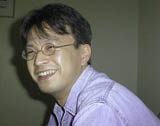
For example, “how many grottoes can I open?” or “how far can I go on my horse?” or “what will happen if I play my ocarina everywhere?” etc. There are lots of little tricks like that, so it takes a little more time to fully enjoy the game.
Usually with subquests the secret things look suspicious. If there’s something that’s a little different from everything else, you should examine it. As for the more difficult secrets, there will be nothing to see but Navi will bring you to the location, so you have to closely follow Navi’s movements. Of course, even Navi won’t show you the most difficult secrets. If you clear those, you’ll be a Zelda Master.
1101: There aren’t any chickens!
Toru Osawa (Script Director): Yes, the chickens are there. If you see them around you can decide whether to fight them. When we were deciding whether to put in the chickens again or not, everyone said “shouldn’t we just leave them out?”. The chickens in Zelda naturally counterattack. I didn’t know, but the staff did it their own way. Is it okay to attack the chickens…? I think you’ll be defeated! *laughs*
1101: So, what happens if you find the Stone of Agony?
Eiji Anouma: There is a Stone of Agony, but it’s shaped like the rumble pack. Nothing will happen when you get it, but you may find it start to shake from time to time. The rumbling will become stronger as you get warmer, and once you find the right place and do something, something interesting will happen.
Takushi Tezuka (Supervisor): By the way, in the English version the “Modae no Ishi” is called the “Stone of Agony.”
A Public Presentation From the Fish-Loving Folks at 1101!!
Special Project – Fishing Minigame
Background: An abundance of minigames separate from the storyline were created for Ocarina of Time. One of them is the Fishing Pond found in Lake Hylia. Even for fishing, the pond is very natural. The graphics and controls make it engrossing. If you have the rumble pack equipped, the controller will vibrate in accordance with the situation, making the act of reeling in feel more realistic. Because the size of the fish is different, the response is also different. It almost feels like real fishing!
In the fishing pond, there are some hidden elements you can only encounter by playing regularly. These are the sinking lure and the Hylian Loach.
The appearance rate of these secrets will now be made clear.
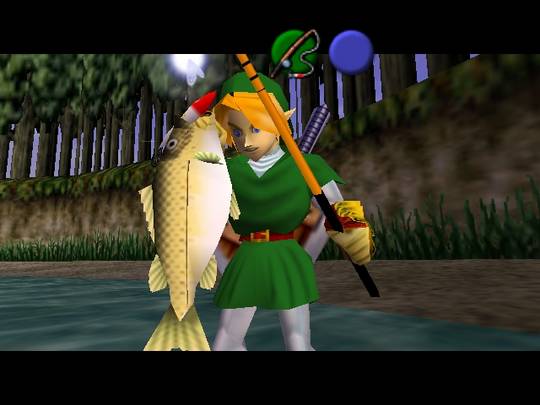
• How to Get the Sinking Lure
As a child, if you can catch a fish over 50 centimeters, the owner of the Fishing Pond will give you a piece of heart. If you catch a fish larger than 60 centimeters as an adult, you will receive the Golden Scale. The Sinking Lure can be found randomly in one of four places. The clump of bushes, on top of the driftwood, near the rocks, and around the waterfall.
(Child Era: 26-55 cm Adult Era: 35-75 cm)
1 out of 4 times (when you enter the Fishing Pond by the door), the Hylian Loach (60-99 cm) will appear. Because the Hylian Loach swims in the deepest part of the water, it is difficult to catch without the sinking lure.
• Hit Rate
Evening: 1.75 Early Morning: 1.5 Muddy Day (day after rain): 1.5 Rainy Day (1 time out of 8): 3.0
This is previously unknown information from our secret base, so feel free to brag about how smart you are!
Looks Like You Can Play an Ocarina in This Zelda
Koji Kondo (Music Director): The original orders from the director were “For the dungeons, try to create music that doesn’t really have a melody, nothing to latch on to.” However, he also requested pretty melodies for pleasant places like the Market, so I had two patterns to follow.
In all, there are 12 ocarina melodies, each corresponding with a theme. I had only 5 notes to use for the ocarina tunes (because of button limitations), be they upbeat major or sad minor songs, making composing difficult.
In dungeons when enemies draw near, the battle music will steadily grow louder. If you come to a standstill in Hyrule Field, the music will have slow phrasing. Should an enemy appear, the music will change to percussion.
Miyamoto: I like international music such as Inca or Latin. I really wanted to put in an ocarina, it seemed really Zelda-esque. Playing an instrument is a much more enjoyable way to accomplish things than just casting a spell.
The music-making process was totally different from Ito’s MOTHER. But even if people say “oh, didn’t you copy him?”, that’s okay.
Absolutely, there were people suggesting “playing the ocarina is too tiresome, let’s make it automatic.” I was undecided as well, but when I went to examine the situation, I found the complainers were happily playing the ocarina too.
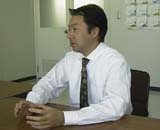
So, let’s see. Who here can do a scale on the ocarina? How about playing your favorite song? Ah, I see… well, I’ll tell you how! If you press R on the controller, the key will shift to a semitone. You can change the pitch by holding up or down on the control stick. That’s how you play B flat, for example. It’s fun! Even though you’re using an ocarina, you can do things similar to a guitar.
It’s also possible to call the horse with the ocarina. In the beginning you used a reed pipe, but it was too much trouble so we eventually changed it to the ocarina.
I’ve always been a fan of country music, including people like Emmylou Harris so I insisted on having a songstress in the game.I changed the ranch girl Malon into a songstress, so the horses were attracted to her because of her song. However, this didn’t really suit her dialogue at the time. Originally we had her singing alone in the middle of the ranch, but halfway through we changed it so she went to the castle, but then she didn’t sing anymore. It was kind of fun to consider those kinds of things. So, that was mostly my part in creating the music.
Kondo: All in all, I ended up writing about 70-80 songs for Ocarina of Time. Don’t tell, but I’m a really slow worker. After one month, I hadn’t even completed 40 songs. *laughs*
Compared to Mario, the world of Zelda has everything. It’s difficult to create a world in which the atmosphere is constantly changing. For when you’re shopping, for example… what sort of music do you need? Think of the shop music in Zelda.
I made the Lost Woods theme using TV-CF. I did an orchestral version, but then I thought “oh, there are already so many arrangements like this.”
Actually, I arranged songs from all the Zeldas up to now in the score to Hyrule Field. It looks like not many people have recognized them! In fact, there were even people on staff who didn’t notice! *laughs*
After, I worked on the surround-sound function, so you could hear the music from behind as well. If you’re playing on normal television and Link throws a bomb behind him, the sound of the explosion will come from the back. If you go swimming, the sound distortion will make it seem like you’re actually underwater. I hope you’ll enjoy listening!
Looks Like You Have to Pay Attention to the Characters in This Zelda
Yoshiki Haruhana (Character Design): I was in charge of the characters, but it was a lot of trouble because of how many there were. It was difficult to make compromises when something went wrong. There were even things that gave me indigestion, but I think we were able to do it in the end.
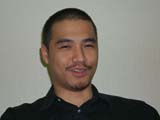
There are more than 60 characters in Ocarina of Time! One character takes about 2-3 days to make, so our schedule is always uncertain. We just have to go from one to the next.
Fellow staff-member Takano once told me “all the people you make turn out to be freaks!” I never intend to do that! My response is always “oh, is that so?” *laughs* For example, Dampe the gravekeeper is a hunchback, right?
In Kakariko Village, there’s a guy sitting by himself on top of a house. It was also never my intention to make a character similar to myself, but afterwards 5 people said to me “Hey, that’s you!” I definitely wasn’t aiming for it, I swear. To the contrary, I didn’t even want to make a character after myself! But even so…
Satoru Takizawa (Character Design): I never meant to fuss over the characters, but still I was inclined to treat them as if they were real.
We designed them to be real, so we were also attempted to make them have interesting and realistic animations. Because they were interesting and elaborate, we wanted the animation to be honest, serious.
Sort of like the Poes, grudgingly running away from the player… Other enemies, when defeated, will burst into flames and disintegrate… little things like that.
There’s even a guy who looks like Kimutaku (Kimura Takuya, Japanese celebrity)! The medicine shop man really clearly resembles him. *laughs* If I told you my favorite character in Zelda: Ocarina of Time, it’d have to be him, the Kakariko Village medicine man with sparking teeth and long hair.
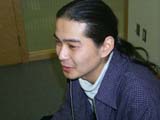
Haruhana: The medicine shop man’s character stands out because of the resemblance. In short, it means he’s too good of a person, making him a freak. While making him, I was thinking “Hey, this guy reminds me of someone…”, but I might have been unconsciously channeling Kimutaku all along, I don’t know.
A good example of a female in the game would be Kakariko Village’s Chicken Lady. Pretty and completely inoffensive! Fellow staff member Onozuka was very pleased with her.
Aside from her, everyone else is a freak. *laughs* Ingo looks a little effeminate, don’t you think? He’s a pigeon-toed weakling. *laughs* I’m happy there were people who noticed the pigeon-toes. It’s a little unkind, but because he is weak inside, him being pigeon-toed casts a bit of a weak image.
Other exemplary characters would be the Bean Seller who resides at Zora’s River, forever eating beans; Dampe, who I mentioned before, the gravekeeper; and the Magic Medicine Shop’s grandmother. Those three are the cutest examples, in my opinion.
Naoki Mori (Cinema Scene Director): I was in charge of Princess Zelda’s demo movies. The games feature Zelda, the heroine, and Link, the knight. Now we also have the appearance of Saria, the forest girl. Though someone else was in charge of creating her, I’ve taken a liking to her. I was, however, conscious of the fact that I had to make it so that Saria’s character didn’t eclipse Zelda’s in the series.
Looks Like Ganondorf is Both Good and Evil in This Zelda
Satoru Takizawa (Character Design): My first impressions of Ganon were of a twisted thief with a complex, and my intention was to create the character in that image. However, the character design team and the script director Toru Osawa told me it wasn’t so, that this time Ganon would be a pretty good guy, a “great fist” like Raou (an anime/videogame character.) They wanted to show a more charismatic big-shot, so I changed my thoughts accordingly.
Ganondorf grew his hair out from the first time you saw him to seven years later. We ended up making 3 forms for the final Ganon. At least temporarily, Ganondorf sort of has a Christopher Lambert-type image… But he turns out to be considerably different, of course.
In the previous Zeldas, Ganon has always been a pig. Though we wanted to do something differently this time, we still thought it would be best to have him as a pig in the end, but weren’t sure how to go about it. I was really worried, myself. I wanted to know what Miyamoto would think. In the end I realized Miyamoto wouldn’t be obsessed about anything like that, and just went through with it myself.
The story in Ocarina of time isn’t actually original, it deals with the Sages’ Imprisoning War from the Super Famicom’s A Link to the Past Because of the relation, I thought it would be right to leave a part of the pigginess in.
So, what I mean is “pigs will be pigs,” hey? When Ganondorf transforms, his human face is pulled away and only the pig remains, it can’t be hidden anymore. During the time we were designing him, some of the staff had cold medicine called Kaigen, so they ended up calling Ganon “The God of Colds” or “The Cold Spreader” (Kaiten mascots.)
Naoki Mori (Cinema Scene Director): In this Zelda there are bits of voice acting here and there, but the voice actor in charge of playing Ganondorf in the first cutscene you see really made him seem like a devil, somehow awful and evil. Afterwards I took the actor aside and asked him not to play a demon, but cool and dangerous at the same time. A voice like cheap wine.
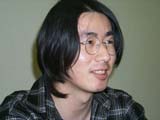
Toshio Iwawaki (Program Director): The movement of Ganon’s cloak in the first part of the final battle was awesome. *laughs* I think they did really well.
Naoki Mori: I was mostly in charge of Ganon’s production, though of course Miyamoto also played a large part.
Miyamoto warned us that “more than trying to figure out how to make the game cinematic, work on the feel and atmosphere.” When Zelda first meets Ganon, for example, she immediately divines that he is a evil person. She appeals with all her might to the people around her, wanting to be understood, but the adults squarely refuse to side with her, her parents ignore her, and she ends up just peering through the window. Miyamoto thought up that sequence. His thoughts always inspire a lot of ideas.
Beyond that, at first it wasn’t a window Zelda was looking through, but rather a peephole. But then someone asked “why would there be a peephole in a castle courtyard?”
Sadly, when we asked the the mappers to change the peephole to a window, I think we made one cry… *laughs*
Altering just one thing makes 5 or 10 people suffer for it, but they did it when we stressed the importance. With their work loads, even a tiny thing becomes a big deal!
Looks Like the Dungeons Are Difficult in This Zelda
Eiji Anouma (Dungeon Design): The very first dungeon of the game is Child Link’s Deku Tree. It wasn’t made as a place that had sprung into existence, but rather as a thing that had always been there.
The dungeons of Zelda are usually planned so the player must retrieve keys to continue onwards, but at the beginning this isn’t required. However, each time you clear a section, you will be unable to go back. For example in “Jabu-Jabu’s Belly,” the valves in his gut have an opening and closing device.
Link is still young, making it difficult for him to acquire so many keys. Besides, it would be a little weird if you needed keys in the inside of a fish, so we ended up finding other methods to use in the living dungeons.
In the middle of the game, the dungeons you have to complete are man-made temples. These include Forest, Water, and Fire, as well as the Shadow Temple and Spirit Temple which were constructed with 2 sections so you can come and go as either adult or child.
When creating the dungeons, we drew level blueprints to consult and spoke in detail to the designers making it for us. However, we left it to the designers to figure out how exactly it was going to turn out.

We got a lot of time to think about the dungeons, so we experimented on the CAD (Computer-Aided Design; used a lot in architecture) sheets the designers made. We ended up planning them like houses, so to speak. The size of the dungeon rooms was based off the size of Link’s body.
The things inside the dungeons move, for the most part. It was a race to finish this in time. It was a lot of trouble to program the balance needed to give big things large, expansive movements and we were constantly worried. However, there were also things that just wouldn’t work, which we quickly got sick of and abandoned because of the limited time in our schedule.
We also put material from one dungeon in others, no sense wasting what can be used again. It was easy to forget which devices were made for which dungeons.
The basic way to finish a dungeon is to kill all the enemies, solve puzzles, press switches, open gates… it’s up to you to decide which item (say, your bow) needs to be used on which switch, or rather what to do if pressing the switch just isn’t that easy… it’s a little cruel of us. *laughs*
Personally, I like the old-style Zelda dungeons in which you have to solve puzzles to continue, where there are fewer enemies. I’d rather have you puzzling over what to do than hacking your way through monsters. I really enjoy the whole conception process. The best part is thinking “Even I couldn’t do this puzzle!” Because we want the player feeling good when they manage to solve it without getting too frustrated, we make sure to run the puzzle through from the beginning and reduce the number of enemies near it.
The puzzle’s contents are orthodox till the middle of the game, and thereafter you must put the things you’ve learned to use. At the beginning, there’s only one puzzle room to solve, then eventually entire dungeons become rotating puzzles. In the final dungeons, everything you’ve learned comes into play and the puzzles are accompanied by an athletic element, as the staff who worked on Mario were kind enough to help us out. Athletic dungeons are their specialty. I don’t think it could flow any better!
Since the beginning Zelda has always had jars in dungeons from which you can obtain hearts or other replenishing items. It’s a bother to go back outside and heal once you are halfway through the dungeon, so of course this Zelda’s no different.
At the start of the game, we made the dungeons easy to navigate with simple puzzles for you to solve. We didn’t want anyone getting frustrated and giving up just after they’d started, so we put in a lot of healing items in the form of grass you can cut to obtain hearts and such. From the middle onwards, you have to do your best with a limited supply of supplements.
We tried to put in lots of rupee-filled treasure chests at first, but people ended up getting annoyed wondering why there were so many rupees in a place where they were totally useless.
The most difficult aspect of Ocarina of Time was the matter of “what could we put in, at what point in time, in what place, that would make the player happy?” However, as we were separated from the consumers, we didn’t get all the data we needed by the end. At the point in time that Link arrived at the dungeon, it took awhile for us to decide what sort of condition he’d be in and things he’d need as a result.
In the Super Nintendo games, there weren’t many items lying around so it was easy to manage the amounts and types, but in Ocarina of Time there are different wallet sizes and the amount of money the player has is totally different. When the player arrived at a dungeon, did they already have enough money? Were they unexpectedly missing an item they needed? We had to think of things like that and put a lot of jars around so players could acquire or replenish what they needed to complete the dungeon.
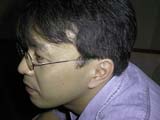
In this game you have the option of being a child or an adult. Thusly, we considered such things as how much money you would be able to carry as a child or what sort of hindrances you would encounter due to your age. We had to try and prepare things differently than previous games in order to make the material interesting.
I, personally, really like the Forest Temple. It was the very first dungeon we designed in Ocarina of Time. At that time we envisioned a lot of material and tried to recreate our ideas. We made the game’s characters around the same time.
At the center of the Forest Temple lies the twisting pathway. When you go through it, you can reach items you couldn’t before. We wouldn’t have been able to make something like that if the game hadn’t been 3D. It’s easy to think “wow, the path twists!” but the designers actually had a lot of trouble with it. I think they spent about a week tormenting themselves over how to make it work. Because the designers were new to this, I drew them a picture to explain how the path should twist. In the end they did their best and managed to pull it off pretty well.
In the Water Temple, the player was required to solve puzzles in not just one room, but travel countless times to and from an area in order to unlock the solution. We were often told how stressful this was. I just wanted the player to relax and take it easy, play around a bit. I’m a fan of skin diving, you see. *laughs* I like being in the water! *laughs* Besides, as long as you have the right items, you can stay in the water forever.
As for the Fire Temple, we created a huge dungeon. Our aim was to allow the player to play around and enjoy the temple, something I believe we were successful at.
Back in the Water Temple, there’s a place where Link can use his hookshot to climb the waterfall. I used a rare one-handed calculator to calculate each hookshot point. I usually spent my time doing more important things, but that day I did something unlike me and worked on the little details. I hope you enjoy yourself there! Each dungeon holds a memory, so make sure to take your time and have fun.
Looks Like the Animation is Incredible in This Zelda
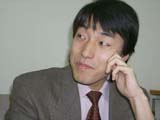
Yoshiaki Koizumi (3D System Director): Adult Link and Child Link are actually programmed with the same animations. Firstly, we programmed their movements so we could animate them. Again, we used machines for the parts that were in motion. In order to research the type of movement in a sword battle, we went to the Uzumasa movie studio and observed moving actors. JAC actors were nice enough to demonstrate other actions for us and we were able to see a lot of movements. At the beginning of Ocarina of Time, for example, Link wakes up in the morning and gets out of bed. Also, if Link stands still he will automatically move around.
Toshio Iwawaki (Program Director): In Ocarina of Time Link has about 1000 animation combinations. The reason there are so many is because both Link’s upper and lower body animations combine to form a whole-body animation. For example, while his upper body is waving a sword, his lower body is walking.
Motion Capture
Miyamoto: We’d been fussing over how Link should open a treasure chest for 3 years.
When we got the idea of using motion capture, there were some in the staff who were against it. We ended up deciding that just a little would be okay.
My company is sometimes worried about losing money, so when motion capture was suggested we were met with a “Do you really need that much equipment? Isn’t what you’re doing now okay?” sort of reaction. We started out using wireframe motion capture, but soon we made our own method which actually cost twice as much. But what’s the point of doing something that’s already been done before?
When we were photographing horses, we even went as far as discussing how to bring a real horse into the studio. In the end we got 2 footstools and a plank and making our own horse like that.
On the day I went to the studio, there was a fantastic iron-frame treasure chest with a sword and shield inside. It clearly had cost a lot of money. When I asked “What is all this for?” the triumphant reply was “We figured out how to open a treasure chest!” Their conclusion was that before you opened the chest you needed to kick the hinge first or there’s no way the action looked realistic.
I wonder if the motion capture team made that too… It was really good stuff.
We actually had some better ideas for the treasure chest, but we couldn’t fit it in this time. Maybe in the near future…?
Naoki Mori (Cinema Scene Director): Another person and I were in charge of the demo production, but since we both liked movies I think we had a foundation to work from. I graduated from the film department in university, but when I joined Nintendo the Super Famicom was still the major system and there wasn’t much film-type work for me to do. Now that I’m able to, I’m pretty happy about it.
It was the first time for either of us to work on a Zelda game, so consequentially we found ourselves occasionally groping around for the right way to do things. When you compare it to the rendering of polygons on the CD-ROM games, the information volume of movies fails. I was trying to think of a way we could cover that. In the end, I spent all my time fussing with the camerawork.

I wanted to do camerawork that could only be accomplished in a polygon game. If we were doing a live scene, for example, we’d have to put together the set with cranes or something. CG is really practical for creating scenes freely.
We also wanted to have something more beautiful than a fixed layout. We thought about the camera movements in relation to the action scenes and the symmetry needed for the emotional scenes.
With the limited information volume of polygons, we initially recognized that we might not be able to improve the quality of the characters’ facial expressions. However, during the stage when we incorporated the angles, scenarios, and direction we tried to make them symbolic. We made textures for Zelda to have her looking sideways at Link, for example, thinking a setup like that would work great.
When the polygons freeze, their information volume suddenly greatly decreases. In the beginning when Link stood still, the camera fixed itself, but the information volume was too small. So we made a wait animation, in short, a basic animation, made from the animation when Link is standing perfectly still, we derived all animations from that.
In terms of the animation, we divided the work between programming and animating, deciding which to apply where. Finally this year we established which method to use.
The very first Space World version was just a simple demo but I didn’t think it was frightening or dreamlike so we fixed it by adding sound effects like “KABOOM!”, cut the sequences to make them shorter, and had a black fadeout. Eventually all the little cuts accumulated and we were able to produce that dreamlike feeling, something I was very happy about.
Toshio Iwawaki (Program Director): Last year, we had a lot of trouble getting ready for Space World. At the very last minute, our playable demo’s animation patterns disappeared. The movement reactions were slow and most of the animation vanished. I felt it was really a disappointment because we had worked so hard on making the animation beautiful. The response of the players was really important to us. What a waste…
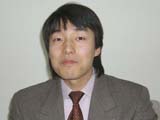
We made some changes after Spaceworld. For example, before you’d press the button to draw your sword and then press again to swing, which lead to complaints of the animation being slow, so we changed it so you could draw and swing with one tap. But Link drawing his weapon and swinging suddenly didn’t make for a picturesque movement, we wanted the player to see Link taking the time to unsheathe his weapon first and changed it a little accordingly. *laughs*
Super Mario 64’s frame rate is 30 frames a second, but Ocarina of Time’s is only 20. I wanted it to go more quickly, but speeding it up made the game look a lot worse and I began to think that maybe 30 would be impossible, finally deciding that 20 frames per second added to the realistic look. I actually still would have liked it to be faster.
Naoki Mori (Cinema Scene Director): In the Legend of Zelda series, the protagonist has never spoken. This new game has inherited the tradition from the Super Famicom era. “This is a game, not a movie!” has always been Nintendo’s slogan, and this time is no different. But saying that, if you add up the time it takes to watch all the movies in Ocarina of Time, the total comes out to be more than 1 and 1/2 hours! The cutscenes are all short, but it adds up.
There are places in the game where you meet Princess Zelda. This is when a lot of special conditions come into play, and we had to program that accordingly. We had to toss out a lot of requests that just weren’t possible and make compromises. If you look at the cutscene we were able to make, long cuts were made to that, and Zelda, of course, remains expressionless.
Then the monitor started spitting out a mountain of errors, saying things like “I don’t feel like working for this princess!” That programmer was a very busy man, but when we interrupted him to ask “Can you somehow put this in, please?” He was able to do the textures and animations and scene cuts and so on. So I really want you to see the “Meeting Zelda” cutscene.
I was also in charge of synchronizing Link playing the Ocarina with the music. Basically my favorite place was the fire dungeon, so I think that’s the place where the music and cutscene synchronizes best. *laughs* I want you to see that, too.
Zelda’s ending reminds me of Star Wars. It also sort of references Dark Crystal. More than figuring out where the scene cuts should be, we were worrying about how to project that atmosphere.
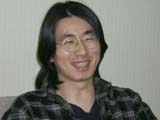
I definitely watch anime a lot. So much so that I’m called Captain Anime. *laughs* Anime I consider interesting I show people with reckless abandon. “This is great!” I say. Recently I’ve been enjoying “Perfect Blue” which is a psycho thriller. It’s not because we used it as a reference for the games, but the transitions of cutscenes were interesting.
The scene cuts are connected to Link’s movements. It was interesting to watch that. In my time, it’s been my experience that things like animation and special effects can’t be separated.
In Zelda our goal was to clear everything up by making small cuts here and there. As for the information volume of the cartridge, of course it’s different from a CD-ROM game. CD-ROMs have a lot more volume. I admit that, you’re right.
We did have a storyboard. Well, we had one, but I wonder about it. *laughs* It’s easy to draw it.
The Parts They Want You to See in This Zelda
We Want You to Listen to the Characters’ Voices
Naoki Mori (Cinema Scene Director): In the Jabu Jabu dungeon there is a princess named Princess Ruto that Link can pick up and throw against walls. The sound she makes when she hits the wall was popular with the staff.
In this Zelda game I think we used lots of voice acting, but even for professional voice actors, just screaming etc. is very difficult. Therefore even if we temporarily brought in amateurs and TV talents, it would have been horrible. I’m happy we asked voice actors.
We Want You to Savor the Pleasant Feeling of Link Falling
Eiji Anouma (Dungeon Design): The dungeons in this game don’t have many levels. In order to evoke the feeling of falling we put a big emphasis on each level so when you’re plummeting down 5 floors you get that “Aaaaaaaaaaaaaaaaagh!” sensation. As for the practical falling distance, I think it’s fine if you fall about 20 meters. More than 20 meters usually results in death, but in this world *laughs* Link can survive. But at first, Link didn’t receive a considerable amount of damage even if he fell 20 meters. When I listened to the monitor’s opinion, “It would be weird for Link to fall so far and be okay”, I adjusted it accordingly.
Another thing… in dungeons there are long drops down to places you need to go. If you fall down there and suddenly receive a lot of damage, that wouldn’t be pleasant. Our solution was to put water at the bottom to act as a cushion, so even if you fell you wouldn’t get hurt.
Of course, if you do fall and roll as you land you can avoid damage. People who can roll are almighty. Even if you land in the water and don’t receive damage, we want you to enjoy the falling sensation.
We Want You to Find Connections to Previous Games
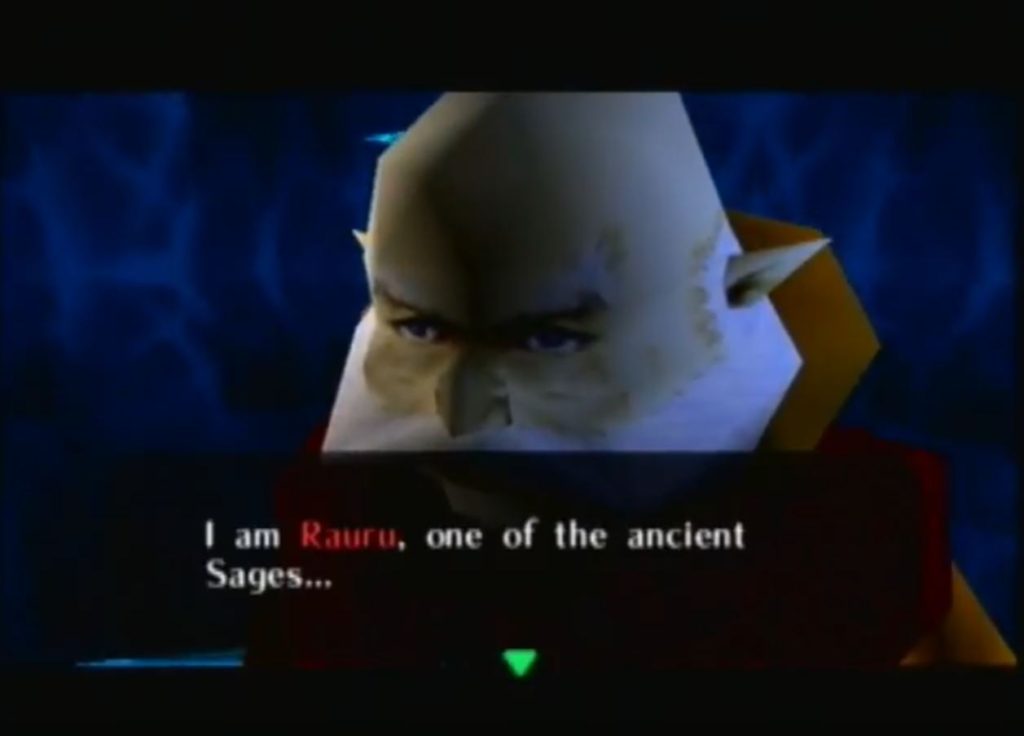
Toru Osawa (Script Director): In this game there are 7 sages that appear and instruct Princess Zelda, but 6 of those appear in the Disk System game “Adventure of Link” as town names.
We were hinting that the names of the sages in the era of the Imprisoning War spoken of in the Super Famicom Zelda game became town names in AoL. The events from that time became what we have today.
A father and daughter named Marin and Tarin that were introduced in Link’s Awakening for GameBoy also appeared in this Zelda game. We’re hoping that people who’ve played the Zelda series from the very beginning will recognize them. If you wonder “is this a reference to then?” we’ll be happy.
We Want You to Do Your Best With the Controller Operation
Miyamoto: It’s often said that the operation of the controller is difficult. But I think that the new controller function is the best yet. There are a lot of things I tried to do, so it was difficult to fit everything in. I thought it would be fun to play with the Z button, but there are children with small hands who can’t move the control stick well when pressing Z, so we put in the Hold option for them. The controller function is the part that I most want you to see.
Yoshiaki Koizumi (3d System Director): I want those who say it’s difficult to just practice and get used to it. It’s just like learning to use a computer, right?
We Want You to Feel the Mystery
Miyamoto: A long time ago on the Famicom, players went by a childish formula: when you saw a suspicious area, you’d test it tirelessly for secrets. The new Zelda’s creation was grand but it was difficult to devise the mysteries. Instead of the usual formula, even in places that seem obvious to the player mysterious things will happen to surprise them. It’s not that it will be completely unexpected, but there’s a bit of a difference between predicting something’s there and seeing the consequences of your actions. We want you to feel the difficulty of that balance.
We Want You to Enter the Game
Naoki Mori (Cinema Scene Director): The usual cutscenes don’t flow like movies, they each have messages. We want the user to push a button and empathize with Link. Press a button, see the decided consequence reflected by the game, and the extent of your empathy increases. We want the player to feel like they are more or less part of the cutscene.
We Want You to Experience a Cinematic Atmosphere
Naoki Mori (Cinema Scene Director): At the beginning, Miyamoto told us “I want to project an atmosphere.” I remember thinking that I wanted that idea to be our foundation. For example, for the sunset we had to figure out how to return the sun to the top of the sky. We were always thinking about how to best project the atmosphere. Everyone planned to have that in mind.
We Want You to Experience the Atmosphere of a Field
Makoto Miyanaga (Field Design): We didn’t get that tone, that feel, because we decided on it in the beginning. It came to us as we worked on it. While we were doing storyboards, we drew and coloured detailed sketches of the field as if it were real.
I myself had the atmosphere in mind. When I joined the development team, the sky’s complete transformation from morning to afternoon, evening, and night was already finished. More and more, I found myself thinking “why can’t we do things like air and atmosphere and wind and smell and temperature?” and ended up pouring all my energy into achieving that.
At least in that regard, I couldn’t let Ocarina of Time’s atmosphere be outdone by any other game. I made it with the thought “from now on, we won’t fail to our competitors.” I’m kind of vain.
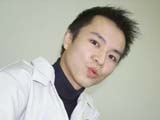
The N64 hardware is able to produce fog. If you use too much of it, it will become cliched, but by tuning the amount subtly we got an “Ah, this.. this is morning” effect and gradually decided the thickness of the fog. We made the decisions for each part, working until the results were satisfactory and not usually having time to touch it up further. Even so, a short time later I’d usually find myself thinking “This is a little dark, isn’t it?” and even though things were already finished I went back and tuned it a little better.
Ganon is Totally Metal
Chie Takizawa (Character Design): We created Ganondorf’s clothing in the style of an 80’s Visual Kei band. He looks like a metal-head. *laughs* Ganondorf is recognizable as a person of the desert. Osawa-san suggested that this time we use red and black and gold to create his colour scheme, so I kept that in mind.
Yoshiki Haruhana (Character Design): Zelda’s apron is quite an elaborate piece of clothing. *laughs* I was the one who filled in the designs on it, like the Triforce and the bird spreading its wings. I redrew it so many times that, of all the female characters, I’ve now come to hate Zelda the most. *laughs*
Satoru Takizawa (Character Design): Creating the characters was really difficult. I was never sure how much I should tamper with the initial character designs and draw out the process. Even though I didn’t want to tamper with it anymore, I kept at it. After all, it’s difficult to make attractive characters. Creating villains is much better. There’s always a little bit of good inside them, which makes it interesting.
Looks like this Zelda was Half Done by Mario
Toru Osawa (Script Director): I spent a lot of time thinking about how to expand the direction of the 3D N64 games that sprung from Mario. You can see that the other games are similar to Mario, but their internal workings are more advanced.
We were thinking about making this Zelda a basic model of operation for all future 3D games, so we tried to boil it down to that level as we developed it. I think we were able to achieve the standards we set.
Tezuka (Supervisor): Because Ocarina of Time was being released after Mario, we wanted to try doing the things we weren’t able to put in Super Mario 64. That was the development team’s chief motivation. If what we did in Mario used about 60% of the N64’s capabilities, I think we were able to get Zelda to reach 80 or even 90.
We got children to test the game during its development, but children can enjoy games just by playing around with them. We didn’t know if it was actually interesting or not.
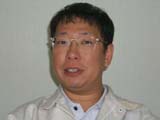
However, we were able to accomplish a variety of things. Everybody enjoys something different, so we can use that to defend ourselves.
Miyamoto: Zelda was about half finished when we were making Mario.
Makoto Miyanaga (Field Designer): How would we be able to create a rich presentation cheaply and easily? It was necessary to think about these things in new ways. In order to make the things we wanted to try possible, we had to find a way to create them on the hardware. The designers were also groping for ways to present the content on a television screen. The scope was huge and we put in all the technological expertise we could muster. Still, it was difficult.
Yoshiaki Koizumi (3D Systems Director): I often get asked about what sort of work I do. My answer is that I’m making a netscape using the N64. In short, I intend to make a 3D browser. In the case of games, there are many people who have information. You have to go to this part of the world to find out.
You have to use this, you have to walk there, you have to jump, you have to go back, etc. My job is to make those plans at the very beginning. Making 3D environments and system tools is my work. First I make a tool, then make a system to the point that I can insert story elements. That’s my job.
Eiji Anouma (Dungeon Design): While we’re basically making the same type of game as the old 2D Zeldas, we have to struggle with an increased depth. Attempting to deal with it just gets slower and slower, so it’s hard to keep working on it continually. It’s always been a battle. The terrain changed as well. For example, now that you can fight on more than one level, the methods of fighting and the way enemies appear has changed. We never had to deal with these issues in the 2D era.
When the program checked the terrain’s topography to determine how enemies with feet should walk, it slowed down. When we were trying to figure out how to make enemies appear on the map, we were mostly forced to stick with floating monsters. However, ghosts are really the only characters that float. That made it a little bit odd. Even when considering problems like when the enemy should appear, sorting out the enemy’s relationship with the terrain was extremely difficult. Because of the type of terrain, we were slow in figuring out how to do it, and it tortured us to the very end.
Designers created a variety of effects, and decided what sound should come at what time. This process also went very slowly. Designers often wanted to give up in the middle. Consequentially, I wonder if the number of enemies in Ocarina of Time is good where it stands. I think that any more than this would be impossible to sort.
The 3D world has a camera, so it’s important that the player be able to see what routes to follow and not overlook something important. By changing the camera viewpoint just a little you might not be able to see something you ought. For this reason we put in Navi, your little follower. She’ll help you notice something that you’d previously be able to see using a fixed-point camera. We couldn’t do everything we wanted due to memory constraints.
Toshio Iwawaki (Program Director): For this Zelda, we wanted to really develop the items available to the player. If you have the right weapon, you’ll be able to easily defeat enemies. That’s what we were aiming for. We had begun the process with Mario, but we had to deal with problems like not having enough function available for what we wanted to do.
Naoki Mori (Cinema Scene Director): In the beginning, there was nothing. When we started this Zelda from scratch, we begun by building the programming tools we’d need. We thought about what was necessary, what operations we’d be using, and what we would have to deal with. It was necessary to figure out what we couldn’t do as well as what we wanted to try.
Eiji Anouma (Dungeon Design): We had to decide how many objects to use. We can’t differ from traditional dungeon enemies and events, but anyone can change things using programming tools. The staff came up with ideas for about 50 objects, arranging and fixing them using the tools.
Looks Like this Zelda Was Tough to Fix
Eiji Anouma (Dungeon Design): Trouble, you say? We had trouble every day. *laughs* The part that worried us most was making the walls out of polygons. Link was capable of a variety of actions. He ran with great force, flew using the hookshot, and caused explosions, but the violence of his movements was causing him to clip through walls. We were making the game to match the basic abilities we had decided on for Link at the beginning, but his ability settings were changed midway through. This lead to the mappers (who had been making the maps according to the original settings) suddenly finding themselves having to change their maps. They were often complaining “We didn’t hear about this!”
As an example, we totally redid the Water Temple. The amount of time Link could stay underwater was changed part way through, so we were working all the way up till this summer to fix situations where an item had become awkwardly positioned or what have you. But people were saying things about Link needing to move at a certain speed in order to seem lively, and we agreed that it needed to be fixed.
People with persuasive power usually won out when discussing what to fix and where. *laughs* It really made people cry. Oh well, I was one of the ones who didn’t cry much.
The mappers cried the most. There were three of them, but they had the most trouble. They still hate them (*) even now.
This is from a little while back, but they heard that the hookshot ability had been changed, they quickly checked the maps and told us “It’s no good! This part is clipping through the walls!” Ahahaha. Consequently, we managed to clear up a lot of big bugs with a little fine-tuning. I want to warn you never to do things like that part way through. *laughs*
(* This data holds information about the end stages of the game’s development.)
Toshio Iwawaki (Program Director): The Super Mario Club (*) had a big influence. After we hired testers, everything was suddenly changed at 30% completion. The programmers were the strictest right to the very end, to be sure. Especially during the debug period. Really, really strict. Because of the excessive detail in the reports, I found myself learning the names of I don’t know how many club staff members.
(* Nintendo’s game testing club. Ocarina of Time had the support of more than 100 people.)
Naoki Mori (Cinema Scene Director): We got a lot of comments from the users and testers telling us how we should do things. I think we had a lot of people obsessed with the game. We even had people telling us in detail how to angle the camera, going so far as to say “This way’s better!” *laughs*
When I was advised on a part that I hadn’t had any particular intention for, I’d think “Is that so…” and redo it. It’s inexcusable, but if it was a situation where I had a clear idea of what I wanted to express I kept it the same in the end.
Takashi Tezuka (Supervisor): At first we had planned to make the game on a smaller scale, but when we finished it we realized how much larger it was than we had expected. It’s difficult to develop a game that big. We were thinking “Wow, it’s actually huge!”
The actual size is about as big as Hirakata. Well, maybe not that big, to be honest, but even if the field is small there are a lot of things you have to do. As for time, I think that for a regular person playing without a guidebook, it would take about 60 hours to finish the game.
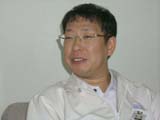
I didn’t dare to dip my paws into things. If I had it would have gotten out of hand and the deadline would have ended up being postponed. *laughs*
Toru Osawa (Script Director): Compared to the old days, we were able to make use of labor. A long time ago, it would be me who drew the pictures, me who thought up the story, and me who decided on the rules. Now, if you did that, you wouldn’t be finish in 10 years. *laughs* We had to use the amount of people we did, it’s just the way things are these days.
As adventure games, the Zelda games have, up till now, been floating along lightly compared to other genres. However, Ocarina’s characters, including the extras, have increased to more than 200. That means it’s intensified. Even so, since the game is so big and the number of characters has increased, even trying to make that many people work properly means they turn into shallow characters and their true feelings don’t show much. Just making that many NPCs function correctly was an extremely difficult thing.
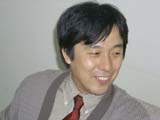
Speaking of size comparisons… oh, you say Tezuka mentioned Hirakata? Ahahaha. That’s right, it’s at least as big as Kyoto. Hyrule Field is around the Imperial Palace, Death Mountain is like Mount Hiei or Mount Kurama. It feels like you can point and say “Hey, I can see that over there! It’s Ryouzen!” But if you think that way, then Kyoto has only 200 people. Not a lot! *laughs*
There will be 9 temples in Kyoto, and we’ll make it so that upon entering each, terrible monsters will appear. If you’re thinking of wandering around the 9 temples, it’ll take you days. To enter one of the temples, pray, listen to the history or something, and explore every nook and cranny will take one day in itself. Then you’ll have to rescue each of the Buddhist priests. Awesome, right? *laughs* We’ll make that next. “Kyoto City Tour – Save the Priests!”
I wonder who’ll be saving them. Maybe the mayor? *laughs*
The Burning Thoughts of the Staff
Toru Osawa (Script Director): The development team for this Zelda is, so far, the largest of all the games we’ve developed. We have more than 100 people doing debug work for us, then when you include all the people that have helped us out, the number grows by about 200. Each one has their own vision for Zelda. You have 200 people and each of those 200 are thinking “I want to make Zelda like this.” You have to ask yourself just how much of that can be absorbed into the game.
As it were, you can call it neglectful, but we have to be prepared for the time when we have to absorb everyone’s thoughts as much as possible. With all the absurdities that sometimes arise, how much will we be able to put in?
I have my own image of Link, too. Of course I want MY Link. My Link is a cool Link. Right off the bat, I wanted to make him cool. But in this Zelda, in order to make Link cool, it was necessary to bend the story, and at the same time I was thinking about how I wanted to stay consistent.
Makoto Miyanaga (Field Design): Each of the staff members put their own ideas into the game. We’re not just making the game to match the theme given to us at the beginning, everyone is making things from their own standpoint, and they hold intensely to their ideas. They were disconnected. Really, really disconnected.

When we had to cut something no matter what, we often heard “Please, whatever you do, don’t take that out!” We kept as much as we could, though. The game came about regardless of those sacrifices.
Toshio Iwawaki (Program Director): This Zelda is, first and foremost, really cool. Playing Mario 64 left a deep impression on me. “What an awesome game. So this is what 3D can do.” That’s what I was thinking. I wanted to make something that would surpass the incredible Mario 64. Of course, the excitement for Mario was something I could only experience at the time I was playing it, so I’m not sure if we really were able to surpass that or not.
It has intensity. Looking at it from the viewpoint of us programmers, it’s the same for every game, but you don’t get any entertainment out of just looking at the graphics. A program goes beyond images. “How did they make this, I wonder?” That’s all we end up thinking about, though it’s a little different from the way the players think. But even from a programmer’s point of view, I genuinely think we did well. I haven’t played through all of it, though, so I don’t know what I’ll think about the whole thing yet.
Toru Osawa (Script Director): I brought my kid to the office on days off to test out the game. We got a bunch of people to be testers, and we’d gather their opinions because we wanted them to be reflected in the game as much as possible. I think being able to do that was our greatest strength. The speed of the fights and the lightness of Link’s footwork are the things I’m most proud of.
My kid is in 6th grade, and I’m 36 years old. I had to calculate it in my head. *laughing* I was a little worried that the game’s controls would be difficult, but my kid was great at it, so it was a bit of a letdown.
We were, of course, thinking about how we could continue making things interesting for the player. However, it takes a certain kind of strength to do so. It’s the same thing you need to grow rice. The soil is barren, the seeds are bad, the spouts are harvested too soon… maybe you know how to harvest or have a good sickle, but you don’t have a pair of helping hands… or maybe you have a lot of people, but you don’t have good implements.
Not to mention the people who are going to eat the rice are gourmets. But despite it all you still have to keep up your output, so you’ve got to make it as palatable as possible and serve it as best you can. People these days care a lot about certain aspects of games. This Zelda’s going to be difficult to play, and I know full well there will be voices calling for it to be easier, but I’d like them to do their best. I just want tell them that if they can surmount it, a wonderful 3D world awaits them.
These days it’s said that all games are similar. Of course we on the creative end aren’t happy about it, but players, kids and adults included, don’t have even enough strength to play a lot of games. We definitely want to feel as though we’re continuing to challenge ourselves to create something new.
Just as I was thinking about this, I was watching my kid playing games at home and it felt as though the game was playing itself. It looked very linear, and when I asked “Is it fun?” the response was “Yep.” I wondered if, in games, too, players wanted to go through from beginning to end without acting for themselves, simply pressing the buttons and receiving a flow of information like watching television or a movie. It made me think. Exploring the world on their own, learning the controls, searching for the way to turn the pages, it doesn’t make them happy anymore. The guidebooks go on sale at the same time as the games themselves.
We’re quick to give up and collapse to the ground. We must’ve had it rough as kids. *laughs* It makes me want to say “You guys are weak,” more than you can imagine.
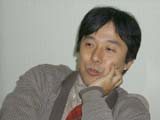
But it’s a mistake for us creators to arrogantly say that they already know as much as they need to know. We have to make the game as palatable as possible, to make the players want to take a bite out of the hard parts, to place those morsels in their mouths as naturally as we can and have them chew on them without noticing. That seasoning or method of presentation, that’s our responsibility. I believe that that’s our job.
Looks Like This Zelda Has the Rumored Miyamoto Magic
Toshio Iwawaki (Program Director): With Miyamoto’s last-minute suggestions, the game changes in an instant. That’s when the so-called “Miyamoto Magic” appears. Prior to this Zelda, I was working on Yoshi’s Island for the Super Nintendo. While I was programming, there were places that got me thinking “Jeez, what should I do here?”
Then Miyamoto would come in and that’s when it would turn into a game. I was thinking “Wow…” Outside of Nintendo titles, there haven’t been a lot of games I’ve been able to think that about recently. The quality of Nintendo games is definitely different.
Even when we were working on Mario, Miyamoto was giving it his all right from the beginning, and when I showed up in the middle I realized that’s how I needed to put my spirit into making things. With Ocarina of Time, we wanted to put in and do so much that we weren’t able to, so of course we have regrets, but more importantly, we just wanted to live up to Miyamoto’s expectations. That’s how much of an impact he makes.
Toshio Iwawaki (Program Director): It isn’t often that we get concrete directives from Miyamoto for the cut scenes, but he’s very picky about the ones that express his ideas.
For example, there’s an owl called Kaepora Gaebora, and there’s a scene where he brings Link from the top of the mountain to the village at the bottom. When you touch the owl, the shot switches to the bird’s point of view. Miyamoto requested that we do it that way, and he was very particular about the little things like direction and timing.
Makoto Miyanaga (Field Design): It’s the little things, like deciding whether to make something wider or narrower. Miyamoto’s sense for things like that, his simple suggestion to do something that way, is what I can’t replicate. I think about what he’s said and give it a shot, and it ends up being just right. That sort of thing happens a lot.

I still get surprised by it. No matter how detailed something is, he understands it on the same level that we do, and talks to us from the same standpoint. This game taught me a lot of things in regards to game design.
Eiji Anouma (Dungeon Design): I came to do data development in order to make this Zelda, but before that I was in a different position and didn’t know about Miyamoto’s methods of game design. That’s why I was really interested in how Miyamoto would go about making Zelda. There were definitely times in the development process, though, when I wondered whether we should be doing things this way.
That was all I could do, though, believe in the way I’d been making games myself up till now. There was nothing to do but stand my ground on various issues and work to integrate my methods. In the end, I think that everything that resulted from doing our best individually came together nicely.
Takashi Tezuka (Supervisor): At first I said “Do what you like, and as long as you can create something interesting, that’s good enough.” But lately, I’ve been conscious of the fact that my name is going to be attached to the game, so I don’t want to put out anything embarrassing… I often said “I want there to be a horse,” since I’m a fan of them.

Toru Osawa (Script Director): For a little while when I started making the game, we were working on the first Zelda. So, I became the gardener in the garden of Miyamoto’s Zelda, and I felt like I was being allowed to tamper with things. There where times when I restrained myself, wondering if I could mess around as I pleased, but there were also times when I’d respond to “That’s a little too far,” or “The way you cut that tree isn’t good,” with “Ah, sorry.” It’s definitely Miyamoto’s creation, so I as always thinking about how I could meet both the players’ and Miyamoto’s expectations.
“What Miyamoto Had to Say”
Shigeru Miyamoto: I was a dedicated employee till about 37 or 38, thinking I had to be reliable. When I turned 40, I started thinking “I can’t do this forever!” There was a long period of time from about 30 to 40 where I owned a guitar but never played. For the 5 or 6 years after I turned 40, I started playing again.
The first time I met Mr. Itoi, I was at my most serious. That’s when he told me “You’ve got to play around a bit more!” I realized that was true. It made me wonder whether it was bad for humans to be that dedicated. Mr. Itoi suggested we get something pierced together, but as you can expect, I couldn’t make up my mind. It hurts, you know?I thought “Well, maybe if I do it later…” *laughing* I admire delinquent employees. But my sense of responsibility is too strong. *laughing*
Miyamoto Talks Zelda Once More
Miyamoto: Well, how was it? What did the other staff members say? Did you get the sense that even when I told them they didn’t have to go quite that far, it was the staff that were picky?
We actually ought to be totally finished the game, but the world is enormous, so we’re not quite done with the basics.
(This interview was conducted during the final stages of development.)
Before, when you hit a stone with your sword, it would result in a “thud” sound. I ran back to where the staff were and said “It has to be a clang! Why haven’t you done that?” It’s a process where all the individual components are made by hand, you see, so no matter what there are always some little details that we forget to put in. It’s tough to double-check all of them, it takes time. But we’re almost there.
Since I’ve been making games for years, there isn’t really anywhere in particular in this game that I’ve got an emotional investment. I don’t have any particular memories to share, but I’d like you to see the whole thing anyways. I really want you to notice the parts that we realized during production couldn’t be compared to any other games. To that extent, I dare say it might be similar to Mario 64. You don’t have to play to the end, but I think it’s a game that will allow you to get your money’s worth with a base playtime of 20~30 hours.
Up to the middle of the development period there weren’t a lot of sub-events. All we did during the latter half of development was work on sub-events and ocarina material.
It’s mostly design work. The designers have certain “pipe dreams,” and put Link in a realistic landscape. Then I put in game elements and sound details, trying not to interfere with the world.

The final battle, you say? I don’t know too much about it. The designers put their own ideas into creating it, all I said was “Just make it so there’s a terrible enemy.” That’s where my work ends. The people working on it now can make the cool things, I just work on the “emotional” part, the basic stuff. My job was deciding which direction I’d allow the Zelda series to go in.
It’s often said that something or another is “Zelda-esque,” but when you ask “What exactly is that?” you’ll always find opposition. There are numerous staff members who’ve been playing Zelda for a long time, so when there are two options to choose from they know which better conveys the image we’ve chosen for Zelda.
We couldn’t do it. We had one general manager for this enormous project, and he couldn’t possibly write down and summarize everything. Even on the creative side, the designers would do excellent work fleshing out each part, and I’d just arrange it all. My hands were full making mini-games that wouldn’t fail to the creative team.
There were a lot of people doing this Zelda who were working together for the first time. These people waited till the last minute, thinking I’d be instructing them on every little thing and ended up not getting any instructions at all. *laughing* That’s how big this game was. If only we had another year. *laughing* But it’s very usable, this system. It would be a waste if you didn’t do a little more with it.
After Zelda
As for my work, I’m thinking that this time I’d like to do something that isn’t part of a series. Cut the members of the current team in half, have a team that was inherited from Zelda, etc. and work on a new project with the remaining people. That’s generally how each Mario and Zelda game is made.
It’s rare that a series is made with a “pure” team, unchanged from before. Usually half of the staff is replaced every time. We always have just the new people doing the main work on each part. Then, at the end when they’re putting on the finishing touches, the original members suddenly drop in and start monkeying around. *laughing* Half the staff working on this game were new to the Zelda series as well. But that’s how big it was.
There are probably quite a few people out there now who bought an N64 to play Zelda. Thank you very much! They’re not very well-known on the N64, but I still have a ton of well-made games I’d really like to recommend to everyone.
Right now, my top recommendation has got to be 1080º Snowboarding. It’s a snowboarding game that came out in February, 1998. We made a mistake by not releasing it till after the Nagano Winter Olympics had finished, so it didn’t sell very well. But it’s such a playable game that it’s quite a waste. That’s why I’m recommending a 1 year old game. I want to introduce it by saying that it’s not old at all.
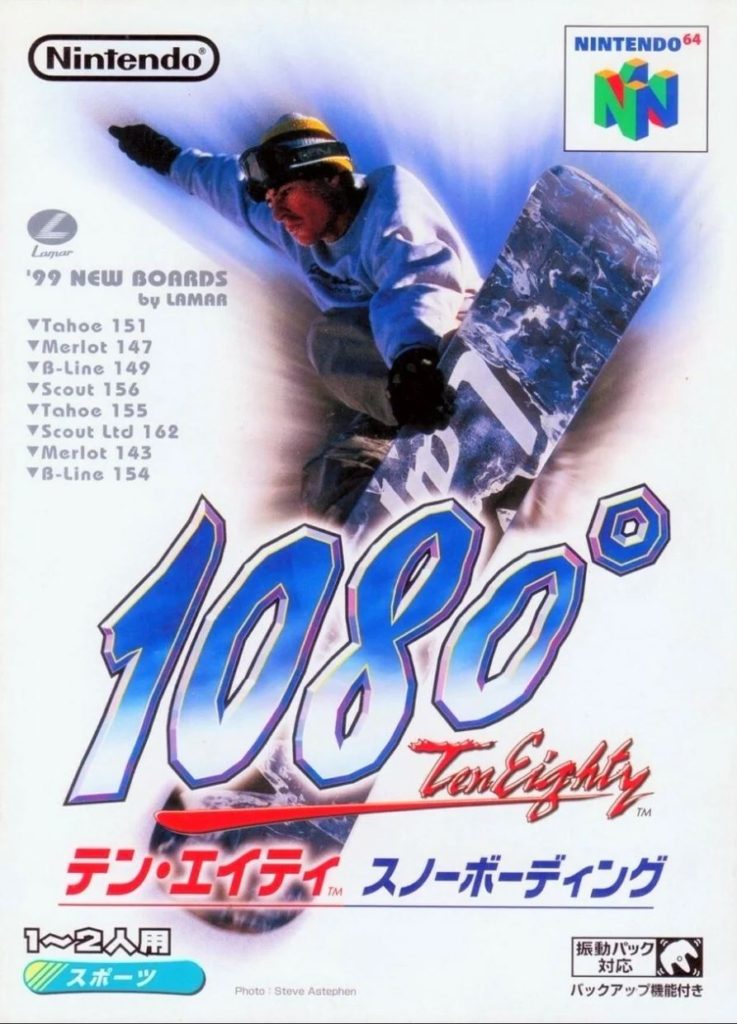
The title is 1080º, pronounced “ten eighty” or “thousand eighty”. It’s named after the triple spin jump in snowboarding. You get to experience a skill normally limited to experts on realistic snow, thanks to the N64’s snow quality!
The boards you can use in-game are all ’99 models from the American company LAMAR, and now you can fully enjoy the seasons. It’s my top recommendation for N64 games this winter, so to those who haven’t played it yet, be sure it check it out. And please let your friends play, too. I’ll be really happy if you can enjoy the games we spent a finite amount of time creating for many years to come. Another N64 game, Wave Race, also sold very well this summer in America.
If people start talking about 1080º every year when winter comes around, it will be rewarding for the staff and fun for everyone.
Right now is the height of snowboarding season, so maybe 1101 should pick up 1080º after the Zelda series is done. The passionate voices of the development staff on that title aren’t eclipsed by Zelda, so please give them a read!
Translation by GlitterBerri.



